193 原始图纸和插图出售:
你在找出售原始图纸吗?
探索所有绘画风格和技巧:当代艺术、街头艺术、抽象艺术、具象艺术、风景、肖像、生活场景、裸体、铅笔、墨水、木炭、粉彩…… 20 年来,有超过 360 万件当代艺术作品等待您去发现……或获得!艺术设计的世界标杆。发现来自世界各地的当代艺术家的作品,用一流的方式装饰您的室内!单纯的艺术爱好者还是公认的收藏家?找到真正突出您的装饰的图画或最喜欢的草图。 ArtMajeur 为您提供世界上最优秀的当代艺术家的原创作品、限量版和艺术版画。在 ArtMajeur 上,图纸是由艺术市场的爱好者和专家挑选的。我们为您精选时尚、屡获殊荣的知名设计师的原创作品以及当代艺术领域的新兴价值,为您在线购买艺术画作提供指导和帮助。
Discover contemporary Technology Drawings on ArtMajeur
Contemporary Technology Drawings are a fascinating genre of original artwork that is gaining popularity in the modern world. They are created using a variety of supports and materials, including digital tablets, stylus pens, and specialized software. These works of art are unique in that they combine the precision and accuracy of digital technology with the creative vision of the artist.

©2023 Hugh Kerr
Origins and History
Contemporary Technology Drawings emerged in the late 20th century as artists began exploring the relationship between technology and art. This movement was influenced by the rise of digital media and the computerization of design processes, which allowed for greater precision and control over artistic output.

©2024 O-Hido Sonia Art
Evolutions of theses works in the contemporary art market
Contemporary Technology Drawings have experienced a significant evolution in recent years. With the advent of digital technology, artists have been able to explore new ways of creating art, which has led to the emergence of new forms of drawing. These new forms range from computer-generated graphics to interactive installations and augmented reality experiences. The importance of these drawings in the contemporary art market cannot be overstated.
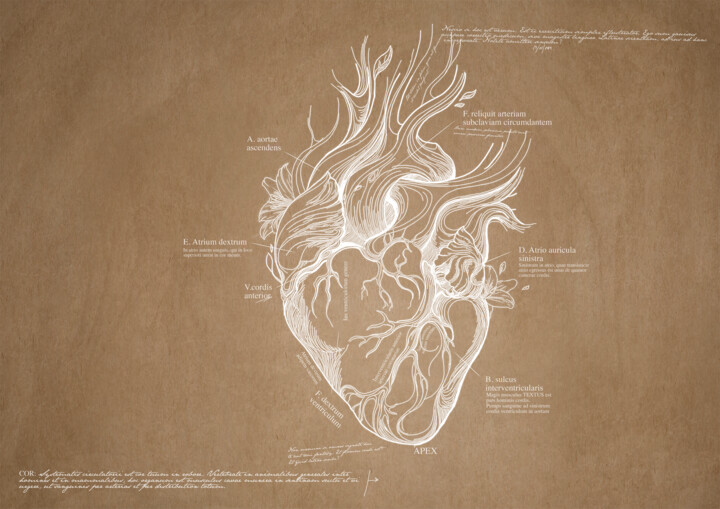
©2019 Rafael Castillo Guillén
Related Famous Artists
Contemporary technology drawings have become increasingly popular over the last few years, and several artists have made a name for themselves in this field. One of the most well-known is Daniel Rozin, whose interactive installations use technology to create mesmerizing works that respond to the movements of the viewer. His "PomPom Mirror" is particularly noteworthy, as it uses 928 faux fur puffs to create a stunning, animated reflection.
Another artist who has gained recognition for her work with technology is Camille Utterback. Her interactive installations often involve projections and sensors that respond to the movements of the viewer, creating a unique and immersive experience. Her "Text Rain" piece, in which falling letters respond to the movements of the viewer, has become a classic of the genre.
A third artist who has made a mark in the world of contemporary technology drawings is Rafael Lozano-Hemmer. His work often involves large-scale installations that use technology to create a dialogue between the viewer and the artwork. His "Pulse Room" installation, for example, uses the heartbeats of visitors to control the lighting in the room, creating a unique and intimate experience.
Other notable artists in this field include Golan Levin, whose work often involves the intersection of technology and biology, and Zach Lieberman, whose interactive installations blur the line between the virtual and the physical world. Overall, the world of contemporary technology drawings is a vibrant and exciting one, with artists pushing the boundaries of what is possible with new technologies and techniques.
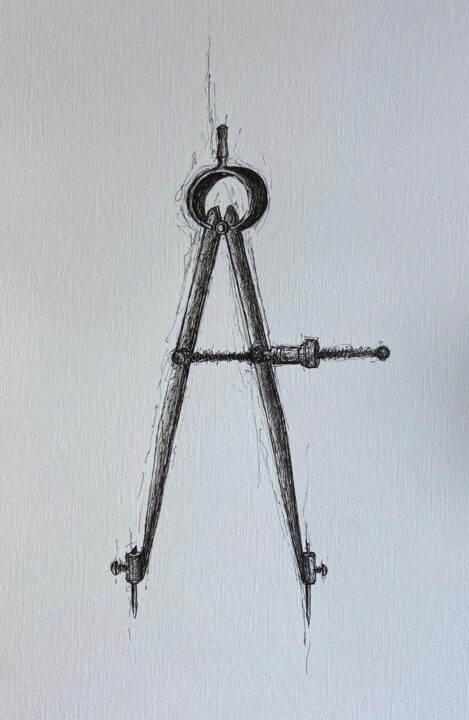
©2024 Marlène Bonnaffé
Notable contemporary Technology Drawings
"Untitled (Google Maps)" by Simon Weckert, 2020, is a performance artwork that involved the artist pulling a wagon full of smartphones through the streets of Berlin to create fake traffic jams on Google Maps. This work comments on our over-reliance on technology and how it can be manipulated.
"Trojan Room Coffee Pot" by Quentin Stafford-Fraser and Paul Jardetzky, 1991, is a historic artwork that depicts the first webcam ever created. The webcam was set up to monitor the coffee pot in a break room at the University of Cambridge. This artwork revolutionized the way we communicate and access information.
"Can You Hear Me?" by Rafael Lozano-Hemmer, 2002, is an interactive artwork that allows visitors to speak into a microphone and have their voice converted into a beam of light, which is projected onto a building. This work explores the relationship between technology, communication, and public space.
"The Clock" by Christian Marclay, 2010, is a video installation that features a 24-hour montage of film and television clips that depict or reference time. The work is synchronized with the actual time and is a commentary on the ways in which we perceive and measure time in our daily lives.
"Hello World!" by Chris Milk, 2011, is an interactive installation that features a robotic arm that writes "Hello World!" in sand. The arm is controlled by a computer algorithm that responds to social media messages. This work explores the relationship between technology, communication, and the natural world.
"Selfie Harm" by Rankin, 2019, is a photography project that features a series of portraits of young people who have been digitally altered to look like they have undergone plastic surgery. The work comments on the pressure that social media and technology place on individuals to conform to unrealistic beauty standards.
"Data-Drive" by Refik Anadol, 2019, is an art installation that uses artificial intelligence to generate abstract visuals based on data collected from the Los Angeles Philharmonic’s archives. This work explores the intersection of technology, data, and creativity.
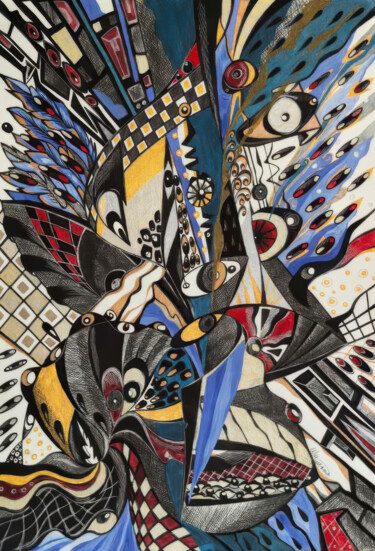
Irina Shumskaya
丙烯在纸上 | 23.6x15.8 in
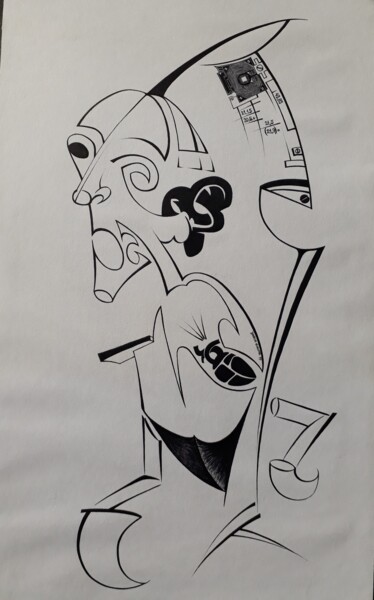
José Ignacio Gianola
圆珠笔在纸上 | 19.7x11.4 in
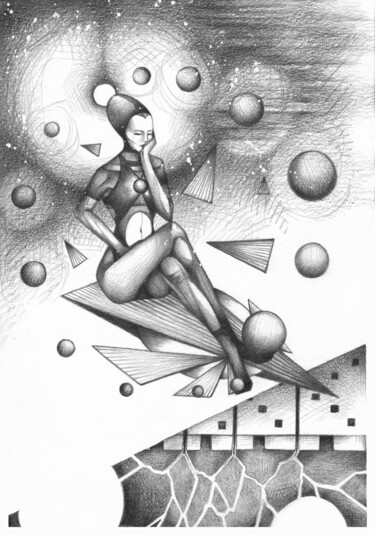
O-Hido Sonia Art
石墨在纸上 | 11.7x8.3 in

Rafael Castillo Guillén
墨在纸上 | 19.7x27.6 in
































